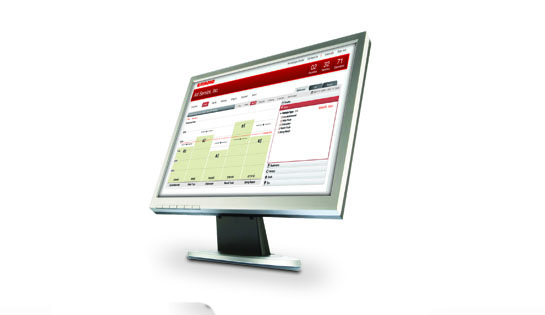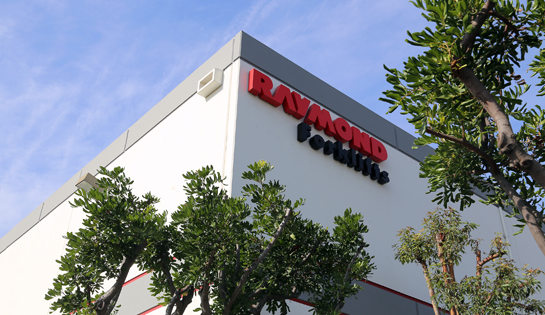Small Changes in Battery Management Can Add Up To Big Savings
.gif?rev=7928adb0b8f3492f8b2f72ec529136f7&la=en&h=231&w=400&hash=E95A1A98412D62A4C0AEC42A7F4486CB)
In many operations, practicing good battery management is often the exception rather than the rule. Smart battery management can identify problems and save you significant amounts of money. Learn the basics, and get on the path to operational savings.
Battery management is not high on the priority list of most warehouse managers. Let’s face it, lead acid batteries aren’t exciting, and most people don’t give them much thought. While consumer batteries for smart phones and electric vehicles are light years ahead of where they were only five years ago, industrial batteries have stayed pretty much the same for decades. Charge them up at night, make sure their fluid levels are ok, and you’re good to go, right?
Not exactly. Batteries are a significant cost for most organizations and most battery programs can be optimized. With a few basic improvements to equipment and processes, you can get an extra year or two of life from your batteries, and that can mean huge savings for your business over time.
Rule #1: Heat is the Enemy
Prolonged or excessive heat is the number one contributor to shorter battery life. And that doesn’t just mean heat during actual operation—factors such as cooling times between battery swaps, charging temperatures and storage temperatures all play an important role.
It’s important to consider a battery’s average temperature. How hot does it get during operation? What’s its average charging temperature? How long is it allowed to rest after charging? What is the average ambient temperature in the warehouse and in the battery room?
There’s a generally accepted rule about average battery temperature: for every degree above 77 degrees, a battery's life expectancy is reduced by 2 percent. In other words, if your battery has an average temperature of 90 degrees over its lifetime, its life expectancy is cut by 25%.
Nearly every recommendation below is at least partially related to heat reduction.
.gif?rev=7928adb0b8f3492f8b2f72ec529136f7&hash=AFDE12981FE3B1A8B58DF58777A71DAE)
Is it Time to Replace Your Chargers?
Although batteries haven’t changed a whole lot over the years, battery charging technology has improved tremendously. Unfortunately, most warehouses haven’t kept up with the times. The vast majority of U.S. operations still use ferroresonant or silicon controlled rectifier (SCR) chargers because they’re reliable and relatively inexpensive.
High Frequency Chargers
In recent years, high frequency chargers have been introduced, allowing much higher efficiency during charging cycles. Like all chargers they convert AC power to DC for storage, but they use advanced circuitry that does the conversion at higher frequencies. This improves charging efficiency to 90% or greater, meaning less power is lost during conversion and consequently, less heat is generated.
Compared to standard chargers that are 70-80% efficient, high frequency chargers can reduce energy use and substantially improve battery life for a nominal investment.
Smart Chargers
Another improvement in charging technology is “smart” charging. Smart chargers monitor heat during charging and step down or stop power as heat increases. This is particularly important during the “finish charge” or the final 20% of the charging cycle when temperatures reach their peak.
The simple act of controlling heat during the finish charge in each charging cycle can add a year or two to the life of every battery in your fleet.
Between high frequency and smart charging technology, replacing chargers can offer a significant ROI with a very short payback window.
Battery Rotation
Batteries must have adequate cooling time between uses, charges and changes. Statistically, batteries that have more time to cool between charging and re-use offer longer run times and longer overall life.
Unless battery rotation is formalized through a process or a battery management system, battery use patterns are highly inconsistent. During changes, most forklift operators will choose the battery closest to them or the newest battery in hopes of getting a longer run time.
In reality, the “best” battery is always the one that has cooled the longest, but operators have no way of knowing that unless a battery management system is in place.
Left to chance, some batteries will get used disproportionately while others will be under-utilized. One study showed that on average, 20% of batteries get over-used and 30% get under-used when no allocation system is in place.
Battery management can be implemented either through a process or with a battery management system that monitors the battery pool and queues batteries for availability based on their cooling time. Either way, correct battery rotation is essential to longer run times and longer battery life.

Battery Watering
Battery watering is typically done on a set schedule, often weekly. While having a schedule in place is better than no process at all, battery watering routines can be counterproductive. There are far more effective ways to manage watering.
Why worry so much about water? Because correct water levels are absolutely essential for battery longevity and run time.
Battery Watering Monitors
Ideally, batteries should be watered on an “as-needed” basis. If a battery needs water, it shouldn’t wait until the next scheduled watering. With inadequate water, battery cells are compromised and overall battery life is shortened.
On the other hand, routinely inspecting batteries that don’t need watering is a waste of time and precious labor. In addition, batteries are hazardous, and needlessly exposing workers to them for routine inspections isn’t a good practice from a safety perspective.
Battery watering monitors are the most efficient way to ensure proper watering. These sensors attach to the top of each battery and notify the user when watering is needed. Battery watering monitors save time, increase battery life and improve safety.
FEATURED PRODUCT
Raymond iBattery
Raymond’s iBattery provides real time information on battery temperature, water levels, state of charge and charge intervals. It will instantly alert you of low water levels, high temperatures, and other important data. iBattery seamlessly integrates with Raymond’s iWarehouse system and provides real time business intelligence on your entire warehouse operation.

Watering Systems
Almost half of all warehouses in the US still water their batteries by hand despite the fact that highly accurate, single point watering systems have been available for years.
A single-point watering system has injectors with measurement valves that are inserted into all battery cells simultaneously. Each injector is connected by tubing, forming a single, aggregated injection point on top of the battery where a water hose is connected. Instead of watering each cell by hand which is prone to error and can take several minutes, the operator opens the top valve and accurately waters a single battery in seconds.
These systems offer a rapid return on investment through labor savings, extended battery run times and extended battery life. They also offer safety and environmental advantages because they eliminate the possibility of overfills that result in acid overflow.
Battery Over-Watering
Hand watering is imprecise and it can lead to shorter run times and shorter battery life. Over-watering a battery often causes a situation known as a boil-over where pressure builds up in the cell and it releases water and sulfates. Without the proper level of sulfates, batteries can’t maintain their capacity and battery life is impaired. Boil over incidents can reduce a battery’s life by 6 months or more.
Corrosion and chemical leakage due to boil-overs is a byproduct of overfilling, and may create additional safety, environmental and cleanliness issues.
Battery Under-Watering
Under-watering can happen when the operator accidentally skips a cell during watering. Under typical conditions where batteries are inspected and watered on a weekly basis, a skipped cell might go an entire week without water until the next watering cycle.
When parts of a battery’s plates get dry it decreases the battery’s capacity, and even when water is re-introduced it doesn’t go back to its original state. In extreme cases, the cell may need replacement.
Battery To Truck Ratio
One final factor to consider is your battery to truck ratio. Do you have enough batteries so that each has sufficient time to cool after each charging cycle?
Over-utilization of batteries can significantly reduce their run time and eventual life span, so it’s important to have enough available for your fleet. On the other hand, having too many batteries needlessly ties up capital.
Striking the right balance between batteries and trucks is an important step in your battery life optimization plan.
Implementing a Battery Management Plan
If you’re interested in state-of-the-art chargers, forklift battery management systems, watering systems or battery monitoring, we can help! Contact a Raymond West representative to learn more.


